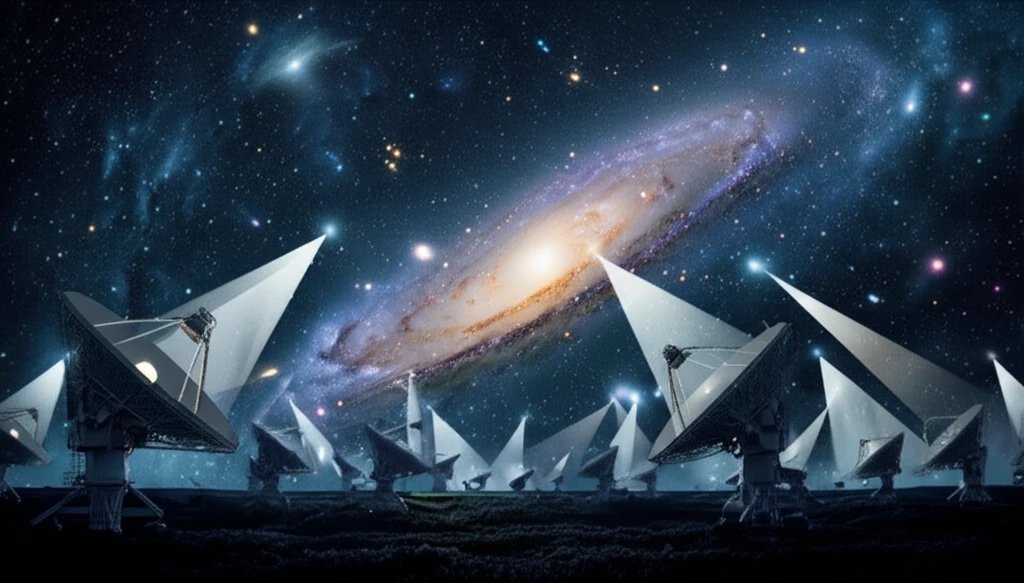
Lost in Space? How Astronomers Correct Blurry Cosmic Images
"Discover how phase-referencing VLBI observation corrections are revolutionizing our understanding of the universe and keeping our cosmic maps sharp."
Imagine trying to take a picture of something incredibly far away. Now, imagine doing it through a thick, swirling atmosphere that distorts everything. That's the challenge astronomers face when observing the universe using Very Long Baseline Interferometry (VLBI). This technique combines data from telescopes across vast distances to create images of incredibly high resolution. However, Earth's atmosphere and other factors can blur these images, leading to a loss of coherence. It's like trying to listen to a symphony with someone constantly changing the volume – the clarity is lost.
In a world of technological marvels, the details matter. In astronomy, those details come from observing the sky with the most precise instruments we have. VLBI is one such method, allowing scientists to resolve astronomical objects with unprecedented clarity. But the devil is in the details, and in this case, the 'devil' is the atmospheric and instrumental errors that can corrupt observations. Correcting these errors is vital to getting an accurate picture of the cosmos.
The original research paper, "Coherence loss in phase-referenced VLBI observations (Corrigendum)" by Martí-Vidal et al., addresses a critical error in a previously published equation. This equation is used to model the relationship between the limiting dynamic range (the ability to see faint objects near bright ones) and the angular distance between a target and a calibrator (a reference point). The correction ensures that the images we create from VLBI data are as accurate as possible.
The Quest for Sharp Cosmic Images: Understanding VLBI Corrections

To truly grasp the significance of this correction, it's important to understand how VLBI works. Think of it as a giant, Earth-sized telescope. By combining signals from multiple telescopes, astronomers can achieve the resolving power of a telescope as large as the distance between the antennas. This allows them to see incredibly fine details in distant objects like quasars, black holes, and even the surfaces of stars. VLBI is essential for studying the universe at the highest possible resolution.
- Improved image clarity and resolution
- More accurate measurements of astronomical object positions
- Enhanced ability to study faint objects near bright sources
- Greater confidence in scientific results based on VLBI data
The Ever-Sharpening View of the Universe
The correction of this equation is a testament to the ongoing refinement of astronomical techniques. Science is a process of continuous improvement, and even seemingly small corrections can have a significant impact on the accuracy and reliability of our understanding of the universe. By ensuring the precision of VLBI observations, astronomers can continue to push the boundaries of our knowledge, revealing the hidden wonders of the cosmos with ever-increasing clarity. These corrected calculations reinforce the importance of refining our tools and techniques to ensure that the pictures we create of the universe are as accurate as possible. As technology evolves and new methods emerge, it's likely that even more details will come into focus, painting an increasingly vivid picture of our universe.
